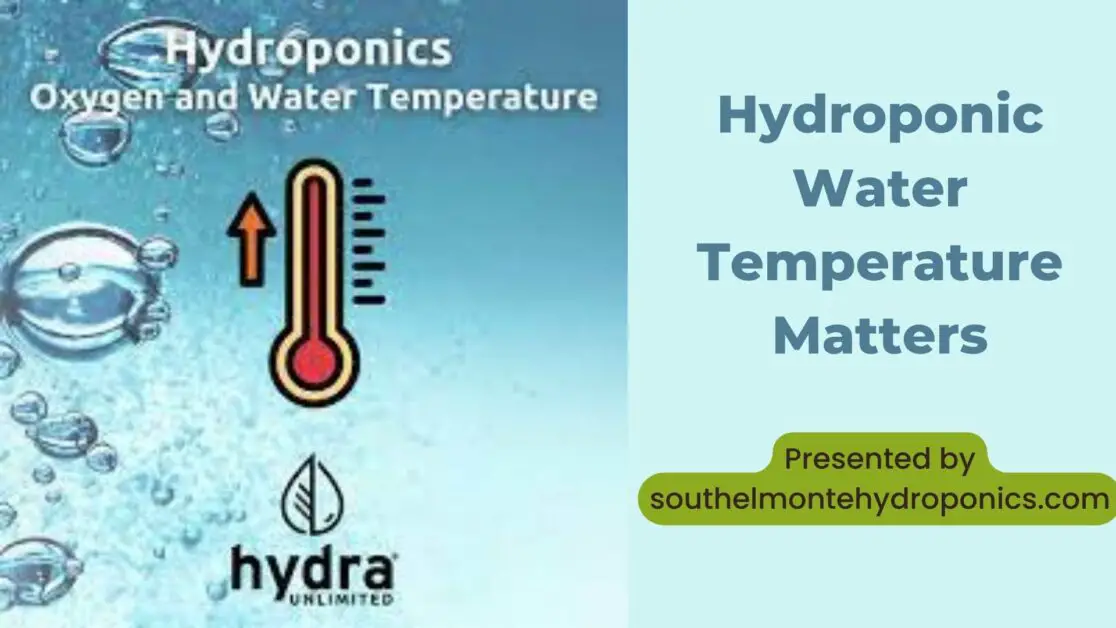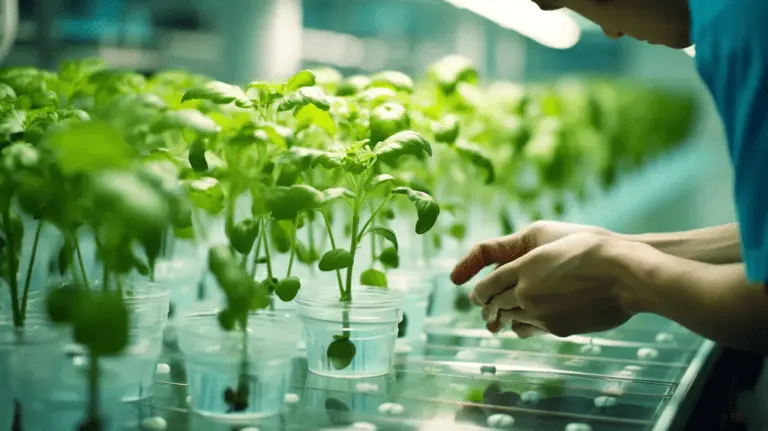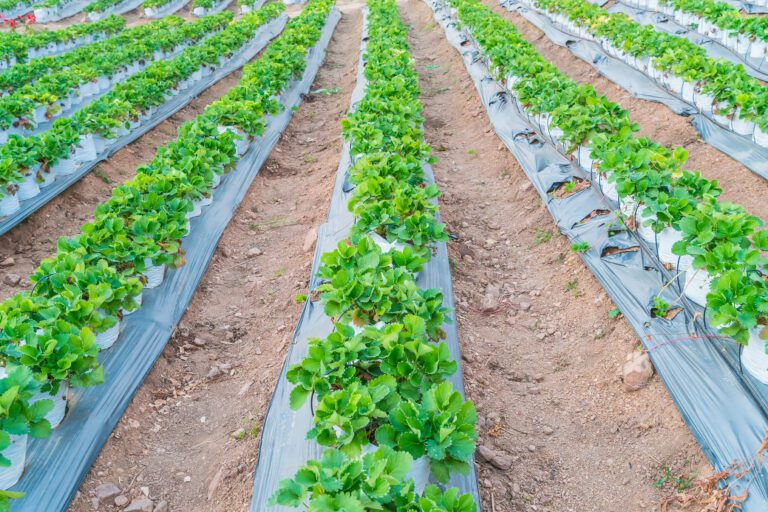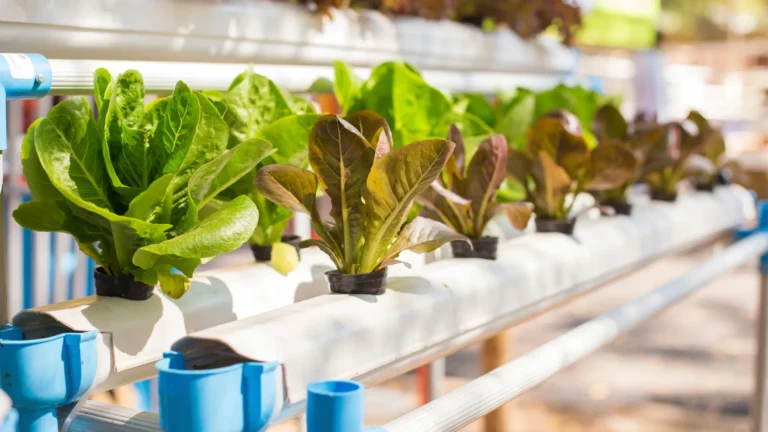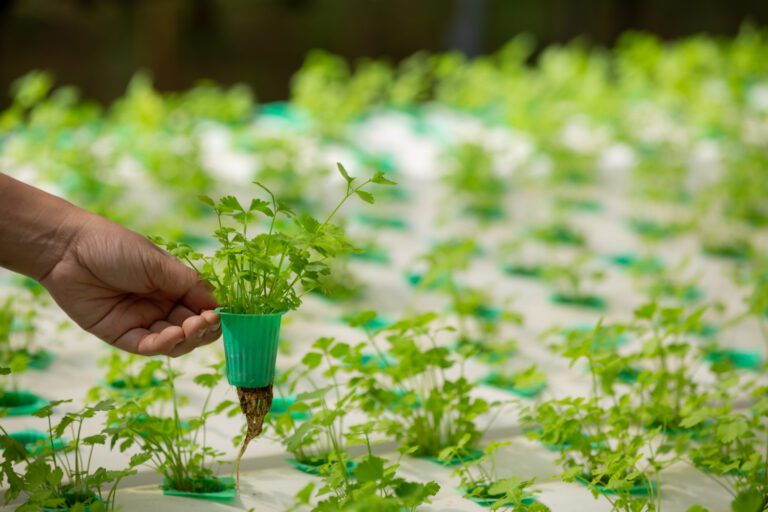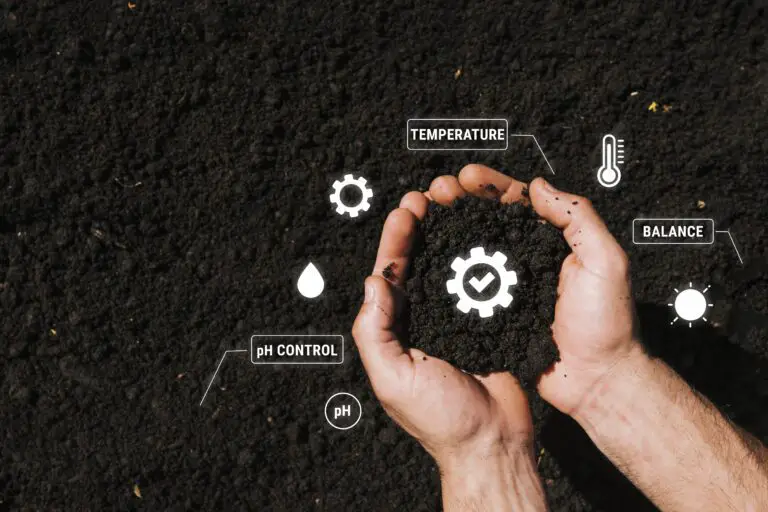Why Hydroponic Water Temperature Matters: The Best way to Maintain the Ideal Water Temperature for Your Plants
Table of Contents
Hydroponic Water Temperature Matters: An Essential Factor in Plant Growth
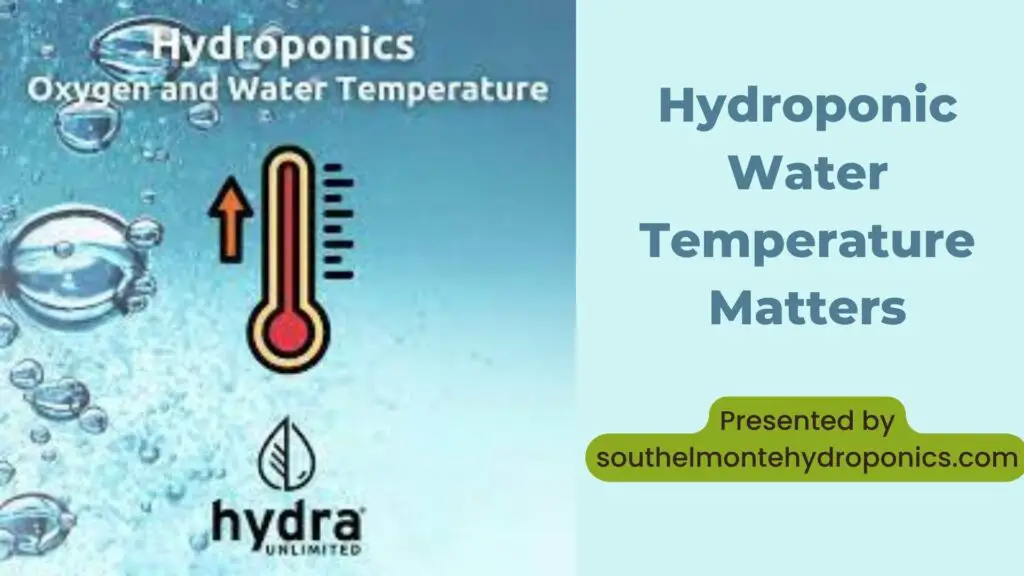
Maintaining the right water temperature is crucial for achieving optimal plant growth in hydroponic systems. Water temperature affects various aspects of plant development, including nutrient uptake, metabolism, and overall plant health. Just like sunlight and nutrients, water temperature plays a fundamental role in the growth and productivity of hydroponic plants.
In hydroponic systems, plants rely solely on the water solution for nutrients, making it critical to provide a favorable environment. Different plant species have specific temperature preferences, and deviating from their preferred range can lead to reduced growth rates, nutrient deficiencies, and even plant death. By closely monitoring and controlling the water temperature, hydroponic gardeners can ensure that plants receive the ideal conditions for robust growth and high yields.
Understanding the Significance of Hydroponic Water Temperature Matters
Water temperature plays a crucial role in the success of hydroponic systems. Understanding the significance of water temperature is vital for gardeners and enthusiasts who aim to maximize plant growth and yield in a controlled and optimized environment.
In hydroponics, water serves as the primary carrier of essential nutrients to the plants’ root systems. The temperature of this water affects various biological and physiological processes within the plants, ultimately influencing their overall development. Research has shown that different plant species have specific temperature preferences for optimal nutrient absorption and metabolism.
Furthermore, water temperature impacts the dissolved oxygen levels in the hydroponic system. Dissolved oxygen is crucial for root respiration and nutrient uptake. Higher water temperatures can lead to decreased oxygen levels, negatively affecting plant growth and increasing the likelihood of root diseases. Conversely, lower water temperatures can slow down plant metabolism and nutrient absorption, leading to stunted growth. Striking the right balance is essential to create the optimal environment for plant health and productivity.
As gardeners, we must consider the specific water temperature requirements for different plant species in our hydroponic systems. By carefully monitoring and adjusting the water temperature, we can ensure that plants receive the optimal conditions for growth and nutrient absorption. In the following sections, we will explore factors influencing hydroponic water temperature, effective techniques and tools for temperature measurement, and strategies for maintaining the ideal temperature range for hydroponic success.
The Effects of Hydroponic Water Temperature Matters on Plant Nutrient Uptake and Metabolism
Water temperature plays a crucial role in the nutrient uptake and metabolism of plants in hydroponic systems. Different plant species have specific temperature preferences for optimal growth and nutrient absorption. When the water temperature is too low, it can slow down metabolic processes, leading to reduced nutrient absorption and poor plant development. On the other hand, excessively high water temperatures can also have detrimental effects on plants, causing stress and nutrient imbalances.
Temperature affects the movement of water and nutrients through the plants’ root systems. Warmer water temperatures facilitate faster nutrient uptake, as they increase the speed and efficiency of ion movement across cell membranes. This allows plants to absorb essential nutrients more readily, supporting their growth and overall health. Conversely, colder water slows down the movement of water and nutrients, inhibiting nutrient absorption and potentially leading to deficiencies. Therefore, maintaining the ideal water temperature is paramount to ensure optimum nutrient uptake and metabolism, maximizing the potential of plants in hydroponic systems.
However, it is important to note that different plants have different temperature preferences, and these preferences can vary at different stages of growth. Some plants thrive in cooler water, while others prefer warmer temperatures. It is essential for hydroponic growers to understand the specific temperature requirements of the plants they are cultivating and adjust their water temperature accordingly. By providing the optimal water temperature for nutrient absorption and metabolism, growers can promote healthy plant growth, improve crop yields, and achieve the desired quality of produce.
Optimal Hydroponic Water Temperature Matters: Key to Maximizing Plant Growth and Yield
Maintaining the optimal water temperature is crucial for maximizing plant growth and yield in hydroponic systems. Water temperature affects various physiological processes in plants, including nutrient uptake, metabolism, and overall plant health.
When the water temperature is too low, it can slow down plant growth and metabolism. Cold water hampers nutrient uptake and reduces the activity of enzymes responsible for essential metabolic processes. As a result, plants may exhibit stunted growth, nutrient deficiencies, and an increased susceptibility to diseases and pests.
Conversely, if the water temperature is too high, it can lead to detrimental effects on plant health. High water temperatures can hinder nutrient absorption, as well as disrupt biological processes within the plant. Plants may experience root damage, wilting, and in severe cases, even death. Moreover, elevated water temperatures promote the growth of harmful bacteria and algae, compromising the overall health of the hydroponic system.
To ensure optimal water temperature, it is recommended to maintain a temperature range suitable for specific plant species. Generally, most plants thrive in a water temperature range of 18-22 degrees Celsius (64-72 degrees Fahrenheit). However, certain plants, such as lettuce and herbs, prefer slightly cooler temperatures around 15-20 degrees Celsius (59-68 degrees Fahrenheit), while tropical plants like tomatoes and peppers perform best within the range of 22-26 degrees Celsius (72-79 degrees Fahrenheit).
By precisely controlling and adjusting the water temperature within the appropriate range, gardeners and hydroponics enthusiasts can create the ideal conditions for plant growth and maximum yield. Additionally, monitoring oxygen levels, managing nutrient solution composition, and implementing proper insulation techniques can further enhance the effectiveness of water temperature management in hydroponic systems.
Factors Affecting Hydroponic Water Temperature Matters Temperature: Exploring the Variables
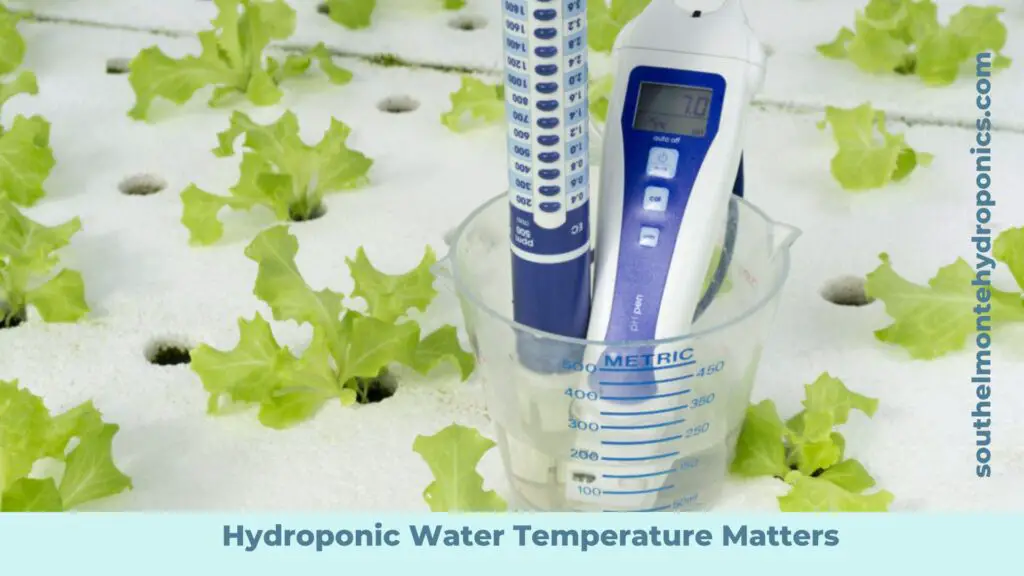
Factors Affecting Hydroponic Water Temperature: Exploring the Variables
Maintaining the correct water temperature in a hydroponic system is crucial for the successful growth and development of plants. Several factors can impact water temperature, and understanding these variables is essential for optimizing plant health and productivity.
One significant factor that affects hydroponic water temperature is the ambient temperature of the growing environment. The temperature of the air surrounding the plants can directly influence the temperature of the nutrient solution. High temperatures in the growing space can cause the water to become too warm, compromising the plants’ ability to absorb nutrients effectively. On the other hand, if the ambient temperature is too low, the water may become excessively cold, hindering nutrient uptake and metabolic processes. Therefore, maintaining the ideal air temperature around the hydroponic system is crucial for achieving and sustaining the desired water temperature.
Another variable that can impact water temperature in hydroponics is the use of artificial lighting. Grow lights can generate heat, which, if not properly managed, can raise the temperature of the surrounding water. The intensity of the lighting, the type of bulbs used, and the proximity of the lights to the plants can all affect water temperature. It is essential to carefully consider the lighting setup and make necessary adjustments to prevent overheating of the nutrient solution. Additionally, the duration of light exposure should also be controlled to prevent excessive temperature fluctuations, as this can negatively impact plant growth.
The volume and size of the hydroponic system itself also play a role in water temperature regulation. Larger volumes of water tend to have better heat retention properties than smaller volumes. Therefore, larger systems may experience less temperature fluctuation throughout the day. The material of the hydroponic containers can also influence water temperature. Materials with good insulation properties, such as foam or double-walled containers, can help stabilize water temperature by reducing the impact of external temperature variations.
In conclusion, various factors contribute to the water temperature in hydroponic systems. Understanding these variables is crucial for optimizing plant growth and productivity. By carefully managing the ambient temperature, artificial lighting, system volume, and container material, gardeners can maintain the ideal water temperature for healthy and thriving hydroponic plants.
Here’s a basic table outlining the importance of Hydroponic Water Temperature Matters:
| Aspect | Importance |
|---|---|
| Optimal Temperature Range | Maintaining an optimal water temperature is crucial for nutrient absorption and overall plant health. |
| Nutrient Uptake | Water temperature affects the solubility of nutrients. Warmer water generally enhances nutrient absorption. |
| Microbial Activity | Temperature influences the activity of beneficial microbes in the hydroponic system, impacting plant health. |
| Oxygen Dissolution | Warmer water holds less dissolved oxygen. Adequate oxygen levels are vital for root health and nutrient uptake. |
| Disease Prevention | Controlling water temperature helps prevent the growth of pathogens and diseases that thrive in specific conditions. |
| pH Stability | Temperature fluctuations can influence pH levels. Maintaining stable temperatures aids in pH control. |
| Plant Metabolism | Temperature plays a role in the metabolic processes of plants. Consistent temperatures promote steady growth. |
| Reservoir Management | Monitoring water temperature is essential for adjusting environmental conditions in the hydroponic reservoir. |
It’s important to note that the ideal water temperature can vary depending on the specific crops being grown, but a general range is often between 65°F to 75°F (18°C to 24°C). Regular monitoring and adjustment of water temperature contribute to successful hydroponic cultivation
The Relationship Between Water Temperature and Oxygen Levels in Hydroponic Systems
Water temperature and oxygen levels in hydroponic systems are intricately connected, playing a crucial role in the overall health and success of plants. As the water temperature rises, the amount of oxygen dissolved in the water decreases. This is because warm water holds less dissolved oxygen compared to cooler water. In a hydroponic system where plants rely on the dissolved oxygen in the water for respiration, this can have significant implications.
Insufficient oxygen levels can lead to a condition known as hypoxia, where plants are deprived of the oxygen they need to carry out essential processes like root respiration and nutrient uptake. Hypoxia can result in stunted growth, reduced nutrient absorption, and increased susceptibility to diseases and pests. On the other hand, maintaining high oxygen levels in the water promotes healthy root growth, enhances nutrient uptake, and improves overall plant vigor. Therefore, closely monitoring and managing water temperature is vital to ensure optimal oxygen levels for plant growth and development in hydroponic systems.
Monitoring Hydroponic Water Temperature Matters Temperature: Tools and Techniques for Accurate Measurement
Accurate measurement of water temperature is crucial in hydroponic systems to ensure optimal plant growth and productivity. Monitoring the water temperature allows growers to make necessary adjustments and maintain the ideal conditions for the plants. In order to achieve accurate measurements, there are various tools and techniques available.
One commonly used tool for monitoring water temperature in hydroponics is a digital thermometer. These thermometers provide quick and accurate readings, allowing growers to easily check the temperature at different locations in the system. Some digital thermometers even come with probes that can be submerged directly into the water for precise measurements.
Another technique for monitoring water temperature is the use of temperature data loggers. These devices continuously record temperature readings at regular intervals, providing a comprehensive overview of temperature fluctuations over time. Data loggers can be especially useful for identifying trends, patterns, and potential issues in the system that may affect plant growth.
It is important to note that when using either a digital thermometer or data loggers, it is crucial to place the sensors or probes at the right locations within the hydroponic system. This ensures accurate measurements that reflect the actual water temperature experienced by the plant roots. Regular calibration and maintenance of these tools are also recommended to maintain their accuracy and reliability.
By utilizing these tools and techniques for monitoring water temperature, hydroponic growers can effectively manage and maintain the ideal temperature range for their plants. This allows for better nutrient uptake, metabolic processes, and overall plant health, ultimately leading to higher yields and better crop quality.
Maintaining the Ideal Water Temperature Range: Strategies for Hydroponic Success
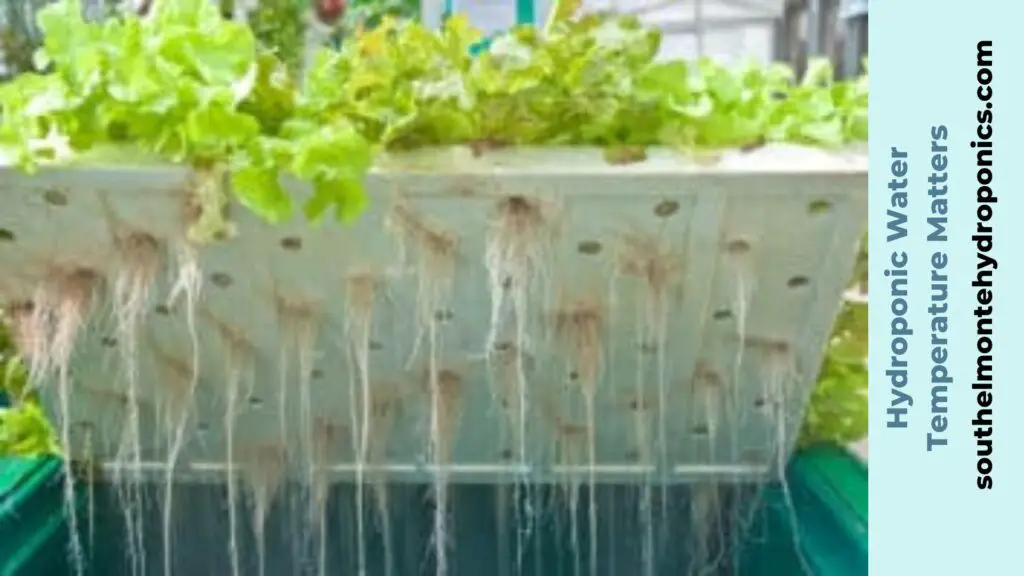
Maintaining the ideal water temperature range is crucial for achieving optimal growth and yield in hydroponic systems. Fluctuations in water temperature can have a significant impact on plant metabolism and nutrient uptake, affecting overall plant health and productivity. To ensure hydroponic success, it is important to implement effective strategies for maintaining a stable water temperature.
One strategy is to utilize a water chiller or heater, depending on the specific needs of the plants being cultivated. These devices can help regulate the water temperature, preventing it from deviating too far from the desired range. Regular monitoring of the water temperature is essential, using reliable and accurate measurement tools such as digital thermometers. By keeping a close eye on the water temperature, adjustments can be made promptly to maintain the ideal range and prevent any adverse effects on plant growth.
In addition to mechanical solutions, there are natural methods that can be employed to manage water temperature. Positioning the hydroponic system in a location that receives adequate insulation or shade can help in regulating the temperature naturally. Additionally, using reflective materials to redirect sunlight or using thermal insulators to minimize heat transfer can be effective strategies. By considering the environmental factors that influence water temperature, growers can make informed decisions to maintain the ideal range, promoting healthy plant growth and maximizing overall yield.
Troubleshooting Hydroponic Water Temperature Matters Fluctuations: Common Issues and Solutions
Common Issues and Solutions
When it comes to maintaining a stable water temperature in hydroponic systems, there are several common issues that can arise. Understanding and addressing these issues promptly is crucial for the overall health and productivity of your plants. One common issue is temperature fluctuations caused by changes in ambient air temperature. This can be particularly problematic in indoor hydroponic setups where the environment is not as controlled as in greenhouse systems. To mitigate this issue, consider using insulation materials such as reflective insulation or foam boards to shield your nutrient solution from external temperature variations. Additionally, installing a temperature-controlled heating or cooling system can help regulate the water temperature and ensure optimal conditions for plant growth.
Another common issue that can lead to water temperature fluctuations is the improper positioning of temperature sensors or heaters. If these devices are not placed strategically, they may not accurately reflect the temperature of the nutrient solution, leading to inaccurate readings and inconsistent water temperatures. To address this, make sure your temperature sensors are placed directly in the nutrient solution, ideally close to where your plants’ roots are submerged. Also, ensure that your heaters are evenly distributed across the system, providing uniform heating throughout. Regularly calibrating and testing these devices is essential to ensure accurate temperature readings and proper operation.
In conclusion, troubleshooting water temperature fluctuations in hydroponic systems requires addressing common issues such as temperature fluctuations caused by changes in ambient air temperature and improper positioning of temperature sensors or heaters. By implementing solutions such as insulation materials, temperature-controlled systems, strategic sensor placement, and device calibration, you can maintain a stable water temperature and optimize plant growth in your hydroponic setup. Stay tuned for more tips and techniques to help you achieve and sustain optimal water temperature in your hydroponics journey.
The Role of Water Temperature in Disease Prevention in Hydroponic Systems
Water temperature plays a crucial role in preventing diseases in hydroponic systems. Maintaining the optimal water temperature range is essential to create an environment that discourages the growth and spread of pathogens. When the water temperature is too high, it can create favorable conditions for disease-causing microorganisms to thrive, leading to increased disease incidence. On the other hand, if the water temperature is too low, it can decrease the metabolic activity of plants, making them more susceptible to diseases.
One of the main reasons why water temperature management is crucial for disease prevention in hydroponic systems is its impact on plant immune responses. Research shows that when water temperature is within the ideal range, plants have a stronger immune system and are better equipped to fight off potential pathogens. Higher water temperatures have been found to stimulate the production of defense-related compounds and the activation of defense genes in plants. Additionally, maintaining the right water temperature can also enhance the effectiveness of beneficial microorganisms, such as biocontrol agents, which play a significant role in suppressing plant diseases in hydroponics.
To effectively prevent diseases in hydroponic systems, it is essential to regularly monitor and adjust the water temperature. The use of digital thermometer probes or temperature sensors can provide accurate measurements and help growers maintain the ideal temperature range. Additionally, implementing strategies such as insulation, the use of shade cloth, or cooling systems can help regulate water temperature and prevent drastic fluctuations that can compromise plant health. By prioritizing water temperature management and taking proactive measures, growers can create an environment that minimizes the risk of diseases and promotes optimal plant growth and productivity.
Adapting Hydroponic Water Temperature Matters Temperature to Different Plant Species: Tailoring for Specific Needs
Different plant species have varying temperature requirements for optimal growth and development. As a hydroponic gardener, it is important to understand these specific needs and provide the appropriate water temperature to ensure successful cultivation.
For instance, let’s consider the popular herb basil (Ocimum basilicum). Basil thrives in warmer conditions and prefers a water temperature range between 65°F to 85°F (18°C to 29°C). This provides the ideal environment for its root system and promotes vigorous growth. Keeping the water temperature within this range helps to enhance nutrient uptake, metabolic processes, and overall plant health for basil plants.
On the other hand, lettuce (Lactuca sativa) has slightly different temperature preferences. Lettuce tends to thrive in cooler conditions, requiring a water temperature between 50°F to 70°F (10°C to 21°C) for optimal growth. Lower water temperatures help prevent heat stress, encourage root development, and maintain the crisp texture and flavor of lettuce leaves.
Understanding the specific water temperature requirements for different plant species allows gardeners to tailor their hydroponic systems accordingly. By providing the right temperature conditions, plants can thrive and achieve their maximum potential, resulting in healthy crops with higher yields.
Integration of Water Temperature Management into Hydroponic Water Temperature Matters System Design
Effective water temperature management is a crucial aspect of designing a successful hydroponic system. By integrating water temperature management into the system design, growers can optimize plant growth and yield while minimizing the risk of detrimental effects.
One important consideration is selecting appropriate equipment to regulate water temperature. For instance, the choice of a suitable water heating or cooling system depends on various factors such as the size of the hydroponic system, desired temperature range, available energy sources, and budget. Heat exchangers, chillers, or even solar-powered systems can be utilized to maintain the desired water temperature within the optimal range for plant growth. It is also essential to install reliable temperature monitoring devices, such as digital thermometers or automated controllers, to ensure accurate and consistent measurement of water temperature.
Additionally, the design of the hydroponic system itself plays a significant role in water temperature management. The location of the water reservoir, proximity to heat sources or direct sunlight, and insulation of pipes and containers all contribute to maintaining a stable water temperature. Proper insulation can prevent heat loss in cooler climates, while shading or reflective materials can help mitigate excessive heat in warmer environments.
By incorporating precise water temperature management strategies into the design of a hydroponic system, growers can create an ideal environment for plant growth. As a result, plants are more likely to achieve their full potential, resulting in increased productivity and overall success in hydroponic gardening.
Expert Tips for Achieving and Sustaining Optimal Hydroponic Water Temperature Matters
When it comes to achieving and maintaining optimal water temperature in hydroponics, there are several expert tips that can help gardening enthusiasts ensure the best conditions for plant growth and yield. One important tip is to invest in a reliable water temperature monitor that accurately measures the temperature of the nutrient solution. This will allow you to closely monitor any fluctuations and make necessary adjustments to maintain the desired range.
Additionally, it is crucial to understand the specific water temperature requirements of the plant species you are growing. Different plants thrive in different temperature ranges, so it is important to research and tailor the water temperature accordingly. For example, some plants may prefer slightly cooler temperatures, while others may require slightly warmer conditions.
To maintain the optimal water temperature range, consider implementing a water heating or cooling system in your hydroponic setup. This can help regulate the temperature and ensure a consistent environment for your plants. Additionally, insulating the nutrient reservoir can help prevent fluctuations caused by external temperatures.
Remember to regularly monitor the temperature of the water, especially during hot summers or cold winters when temperature fluctuations are more likely to occur. By staying vigilant and making necessary adjustments, you can provide your plants with a stable and favorable water temperature, ultimately promoting their growth and maximizing your hydroponic system’s yield potential.
Why is water temperature important in hydroponics?
Water temperature is crucial in hydroponics because it directly affects plant growth and nutrient uptake. It influences the metabolism, oxygen levels, and disease prevention in hydroponic systems.
How does Hydroponic Water Temperature Matters affect plant nutrient uptake and metabolism?
Water temperature impacts the rate at which plants absorb nutrients through their roots. Higher temperatures can enhance nutrient uptake, while lower temperatures can slow it down. Additionally, water temperature affects the metabolic processes of plants, influencing their growth and overall health.
What is the optimal temperature range for Hydroponic Water Temperature Matters systems?
The ideal water temperature range for most hydroponic plants is between 65°F (18°C) to 75°F (24°C). However, certain plant species may have specific temperature requirements, so it’s important to research and adjust accordingly.
What factors can affect the temperature in Hydroponic Water Temperature Matters systems?
Several variables can impact water temperature in hydroponics, including ambient temperature, lighting intensity, heat generated by equipment, insulation of the system, and the temperature of the nutrient solution added to the reservoir.
How does Hydroponic Water Temperature Matters temperature affect oxygen levels in systems?
Warmer water holds less dissolved oxygen, while cooler water can hold more. Therefore, maintaining the appropriate water temperature helps ensure an adequate oxygen supply to the plant roots, promoting healthy growth.
What are some tools and techniques for monitoring Hydroponic Water Temperature Matters temperature?
Some common tools for measuring water temperature in hydroponic systems include digital thermometers, temperature sensors, and data loggers. These devices provide accurate and real-time temperature readings.
How can I maintain the ideal water temperature range in my hydroponic system?
To sustain the optimal water temperature range, you can use techniques such as adjusting the ambient temperature, insulating the system, using water chillers or heaters, and monitoring the temperature regularly to make necessary adjustments.
What are common issues and solutions related to water temperature fluctuations?
Fluctuating water temperature can lead to plant stress, nutrient imbalances, and decreased growth. Solutions include using insulation, adjusting lighting intensity, adding a temperature control device, and monitoring temperature consistently.
How does water temperature relate to disease prevention in hydroponic systems?
Maintaining the appropriate water temperature can help prevent the growth of pathogens and diseases in hydroponic systems. Cooler water temperatures can inhibit the development of certain bacterial and fungal infections.
How can I adapt water temperature to suit different plant species in hydroponics?
Different plant species have varying temperature preferences. Researching the specific temperature requirements of each plant and adjusting the water temperature accordingly will help meet their individual needs.
How should water temperature management be integrated into hydroponic system design?
When designing a hydroponic system, factors such as insulation, ventilation, and temperature control mechanisms should be considered to ensure stable and optimal water temperature conditions for plant growth.
What are some expert tips for achieving and sustaining optimal water temperature in hydroponics?
Some expert tips include maintaining a consistent room temperature, insulating the reservoir, using a water chiller or heater, monitoring and adjusting nutrient solution temperature, and regularly checking the water temperature for any fluctuations.

